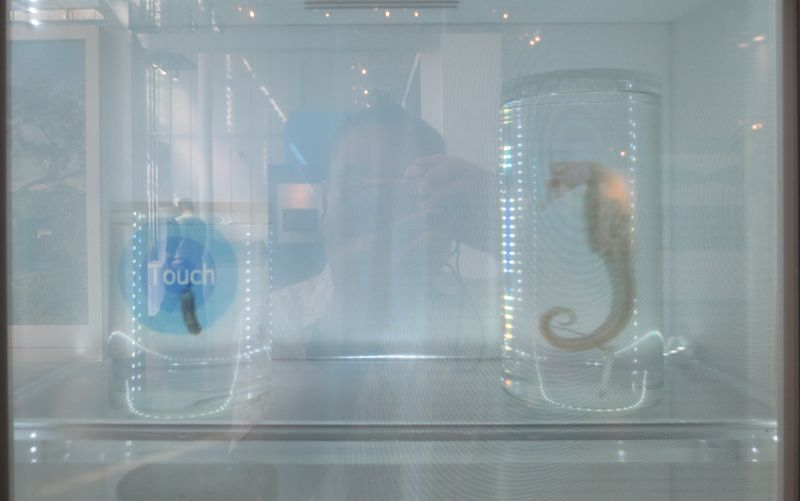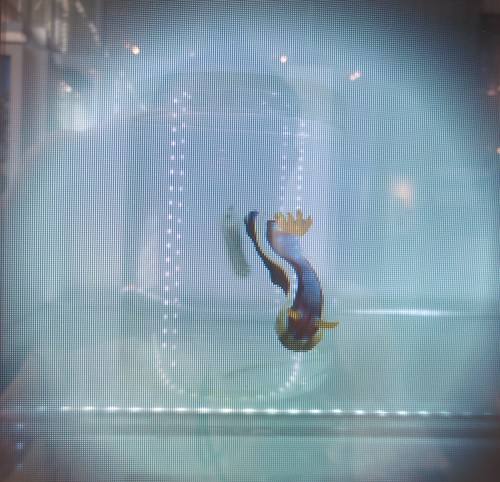I’m still so impressed with the new “Color of Life” exhibit at my museum, the California Academy of Sciences. “Color of Life” focuses on the many amazing ways that color communicates, conceals, and warns in the natural world.
We have such talented exhibit and experience designers on staff, and it’s cool to see them unleash their creativity and wizardry on the public through this new exhibit. “Color of Life” has dozens of amazing tech-powered stations that people can interact with, from an iconic color visualizer that the visitor can “play” like a harp to a Dance Dance Revolution-style game where the player attempts to replicate the mating dance of three very different colorful species.
One of the subtler but still dazzling bits of tech is a “Colors Cabinet” created by our Experience Engineering team. It’s a bit hard to see on the video I shot, but basically when you come up to the Colors Cabinet, it appears to just be three shelves with five preserved specimens in clear jars. But when you touch the glass near one of the specimens, images, text and video appear on the glass in front of the specimens. It’s a pretty dazzling effect, particularly when part of the screen is still transparent, while the rest is displaying an image.
Here’s a kind of crappy video I shot trying to demonstrate the interactive display.
Sorry, it doesn’t look that great from my video, but its much cooler in person.
But how did they do it? It was a huge team effort involving science experts, programmers, fabricators, designers, and video and graphic producers. The basic tech is a display that combines OLEDs (organic light emitting diode) and TFT (thin film transistors). This bleeding edge technology can display vivid images and video or be completely transparent, showing what is behind the display. You can learn more about transparent and top-emitting OLEDs on How Stuff Works.
One of the coolest uses of this capability is how the Colors Cabinet both reveals a preserved specimen of a nudibranch as well as a photograph of it alive superimposed on top of it. This is a great entry point for educating about how beautiful colors of the nudibranch (and other species) fade quickly when they are collected, and thus the need for other forms of documentation and archiving of data about nudibranch.
I saw similar technology at Disneyworld as part of the “Sorcerers of the Magic Kingdom” experience that I played with last time I was there. Here’s a video showing off one of their interactive displays, cleverly hidden throughout the theme park.
It’s so cool to see new tech like this used for science education and engagement in a museum. I’d love to explore more ways for the public to interact with our exhibits with the same or higher levels of engagement that I saw at Sorcerers of the Magic Kingdom. Cool interactive displays like the Colors Cabinet are definitely a step in the right direction.
You can learn more about how we created the “Color of Life” exhibit by checking out this video below.
“Color of Life” is open now at the California Academy of Sciences, 55 Music Concourse Drive, San Francisco. Learn more at http://www.calacademy.org/exhibits/color-of-life .




